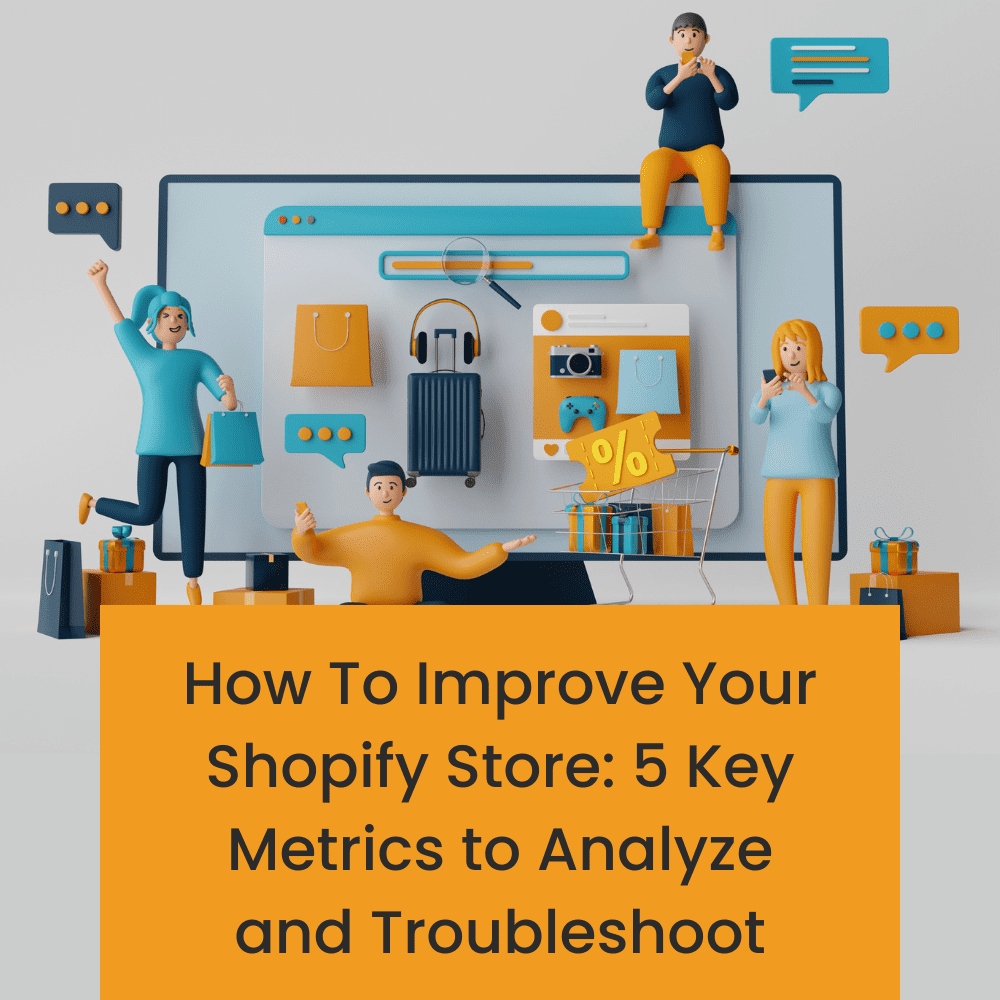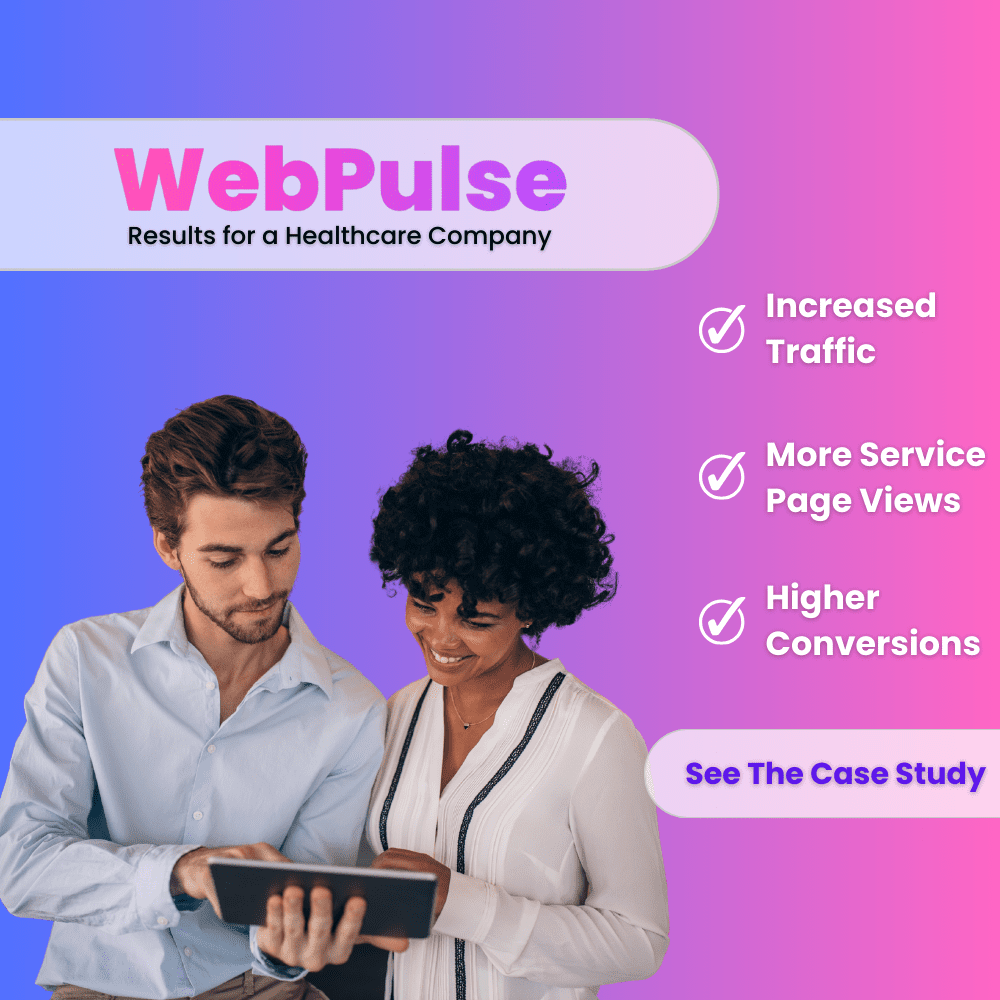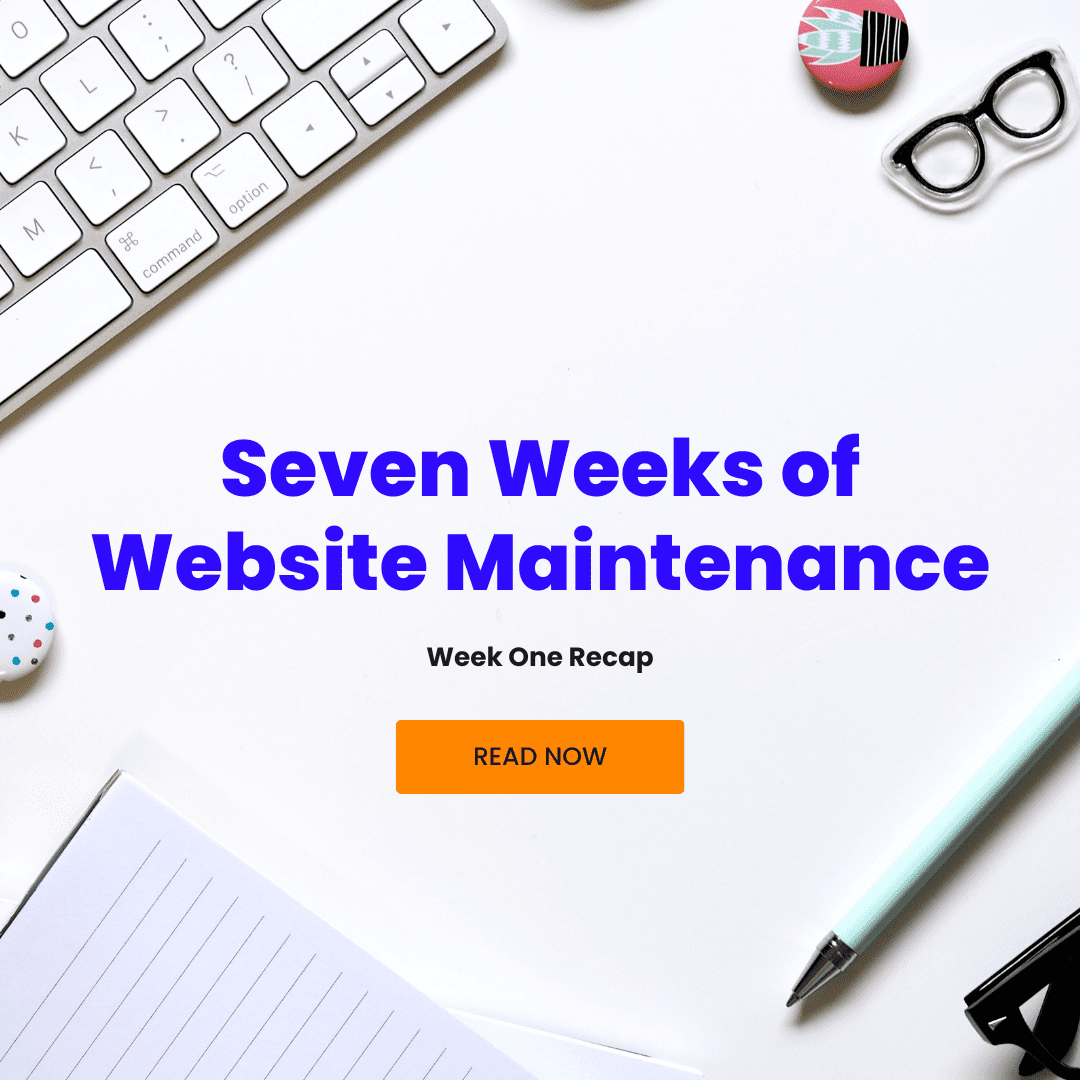If you’re looking to increase your sales on shopify, analyzing your current metrics is the best place to start. There are several metrics that can help you determine the overall health of your shopify store and help you pinpoint specific issues and potential solutions. Keep reading to learn which metrics can help you elevate your store’s performance.
Key ecommerce metrics for shopify stores plus troubleshooting tips
1. Conversion rate
Conversion rate is the heartbeat of any ecommerce store, representing the percentage of visitors who make a purchase. There are several web design principles you should know to boost your conversion rate on your website. When looking specifically at your shopify store, conversion rate tracking is seamlessly integrated into your analytics toolkit and can provide crucial insights.
Optimization Strategies:
- Dive into shopify analytics to dissect conversion rates by traffic sources, devices, and product categories.
- Conduct A/B testing on product pages and the checkout process to identify and implement high-converting elements.
Troubleshooting Tips:
Issue: Low conversion rates.
Solution: Analyze shopify analytics to identify drop-off points in the customer journey and optimize the user experience. Are the pages loading slowly? Is product information clear? Are you attracting the wrong audience to your site? These types of questions can help you pinpoint the issue and potential solutions.
Issue: High traffic but low conversions.
Solution: Refine targeting strategies since you may be attracting the wrong audience to your site. Be sure you’re targeting potential buyers who will convert. This means you may need to adjust the audience criteria on your social media ads, google ads, etc.
2. Average order value (AOV)
Average Order Value (AOV) is the average amount a customer spends per transaction. Understanding and optimizing AOV is crucial for maximizing revenue and profitability.
Optimization Strategies:
- Explore shopify reports to analyze AOV trends and identify top-performing products.
- Implement upselling and cross-selling techniques, such as bundling, to increase the value of each order.
Troubleshooting Tips:
Issue: Declining AOV.
Solution: Analyze shopify analytics for changes in customer behavior and adjust upselling or cross-selling strategies.
Issue: Uneven AOV distribution.
Solution: Use shopify reports to identify products contributing most to AOV and adjust marketing strategies accordingly.
3. Cart abandonment rate
Cart abandonment rate reflects the percentage of users who add items to their cart but do not complete the checkout process. Shopify provides insights into this critical metric.
Optimization Strategies:
- Leverage shopify’s built-in abandoned cart recovery tools to re-engage potential customers.
- Evaluate and streamline the checkout process based on shopify’s cart abandonment analytics.
Troubleshooting Tips:
Issue: High cart abandonment rate.
Solution: Set up automated cart abandonment emails through Shopify to remind users and incentivize them to complete the purchase.
Issue: Specific products consistently abandoned.
Solution: Use shopify reports to identify problematic products and optimize their presentation or pricing.
4. Product page and checkout page load time
The speed at which your product and checkout pages load directly influences user experience and, consequently, conversion rates. Shopify equips you with tools to monitor and optimize page load times.
Optimization Strategies:
- Compress images and assets using shopify-specific techniques.
- Leverage shopify’s content delivery network (CDN) for faster loading across global audiences.
Troubleshooting Tips:
Issue: Slow page load times.
Solution: Use shopify analytics to identify elements causing delays and optimize accordingly.
Issue: High bounce rates on specific pages.
Solution: Analyze shopify reports to identify problematic pages and optimize their load times and content.
5. Customer lifetime value (CLV)
Customer lifetime value is a metric that estimates the total revenue a business can expect from a customer throughout their entire relationship. It helps in understanding the long-term impact of customer interactions.
Optimization Strategies:
- Analyze shopify reports to segment customers and identify high-value customer segments.
- Implement loyalty programs or personalized marketing strategies to increase customer retention.
Troubleshooting Tips:
Issue: Declining CLV.
Solution: Use shopify analytics to track changes in purchasing behavior and implement targeted campaigns to re-engage customers. Also be sure to analyze the competition and market trends to better identify why demand may be declining and how to best compete.
Issue: Varied CLV across customer segments.
Solution: Leverage shopify reports to understand the characteristics of high CLV segments and tailor marketing efforts accordingly.
Conclusion
As you refine and enhance your shopify store, remember that the path doesn’t end here. Establish a continuous monitoring plan, stay attuned to emerging trends, and adapt swiftly to the ever-evolving landscape of online retail.
Need help maintaining your shopify store? Check out WebPulse strategic website maintenance where we handle the heavy lifting for you so you can focus on your core business.








0 Comments